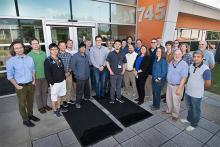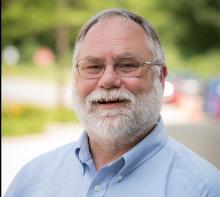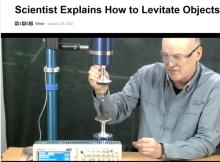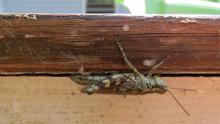2020
Information in the media about coronavirus (COVID-19) research at Argonne and the APS continues to mount.
A potential drug target has been identified in a newly mapped protein of SARS-CoV-2, the virus that causes coronavirus disease 2019 (COVID-19). The structure was solved by a team including the University of Chicago, the U.S. Department of Energy’s Argonne National Laboratory, Northwestern University Feinberg School of Medicine and the University of California, Riverside School of Medicine.
With funding from the DOE for a two-year pilot program, scientists from the five light sources have formed a Data Solution Task Force that will demonstrate, build, and implement software, cyberinfrastructure, and algorithms that address universal needs between all five facilities.
Here's how to contact the APS Users Organization with any questions/concerns/feedback/ideas/problems.
Mark Beno, a senior chemist at the U.S. Department of Energy’s Argonne National Laboratory, has been posthumously awarded the distinction of Fellow by the American Association for the Advancement of Science for his expertise in chemical crystallography.
From WIRED via "Yahoo news": Believe it or not, levitating objects aren't just the stuff of science fiction and magic shows. There are actually many different forms of levitation including something called acoustic levitation, which uses powerful sound waves to trap objects in mid-air. WIRED spoke with a physicist [Chris Benmore] at Argonne National Laboratory to find out how acoustic levitation works and what it's used for.
The Physical Chemistry Division of the American Chemical Society has announced that Lin X. Chen has received the 2020 Award in Experimental Physical Chemistry. Chen is a senior chemist in the Chemical Sciences and Engineering division of the U.S. Department of Energy’s Argonne National Laboratory, as well as a professor in the Department of Chemistry at Northwestern University.
From the Smithsonian Magazine SMARTNEWS: A team of researchers first stumbled upon their discovery while examining grasshoppers in the [Advanced Photon Source at] Argonne National Laboratory, a device that uses synchrotron X-rays to generate precise, high-quality images and video.
From "Trilobites" in The New York Times, January 13, 2020: Grasshoppers have to deal with blood pressure issues when they are upside down, according to research at the Advanced Photon Source.
The 22nd National School on Neutron and X-ray Scattering will be held on June 13-27, 2020, at the U.S. Department of Energy’s Argonne National Laboratory and Oak Ridge National Laboratory.










